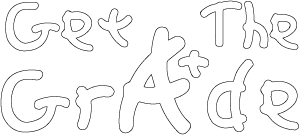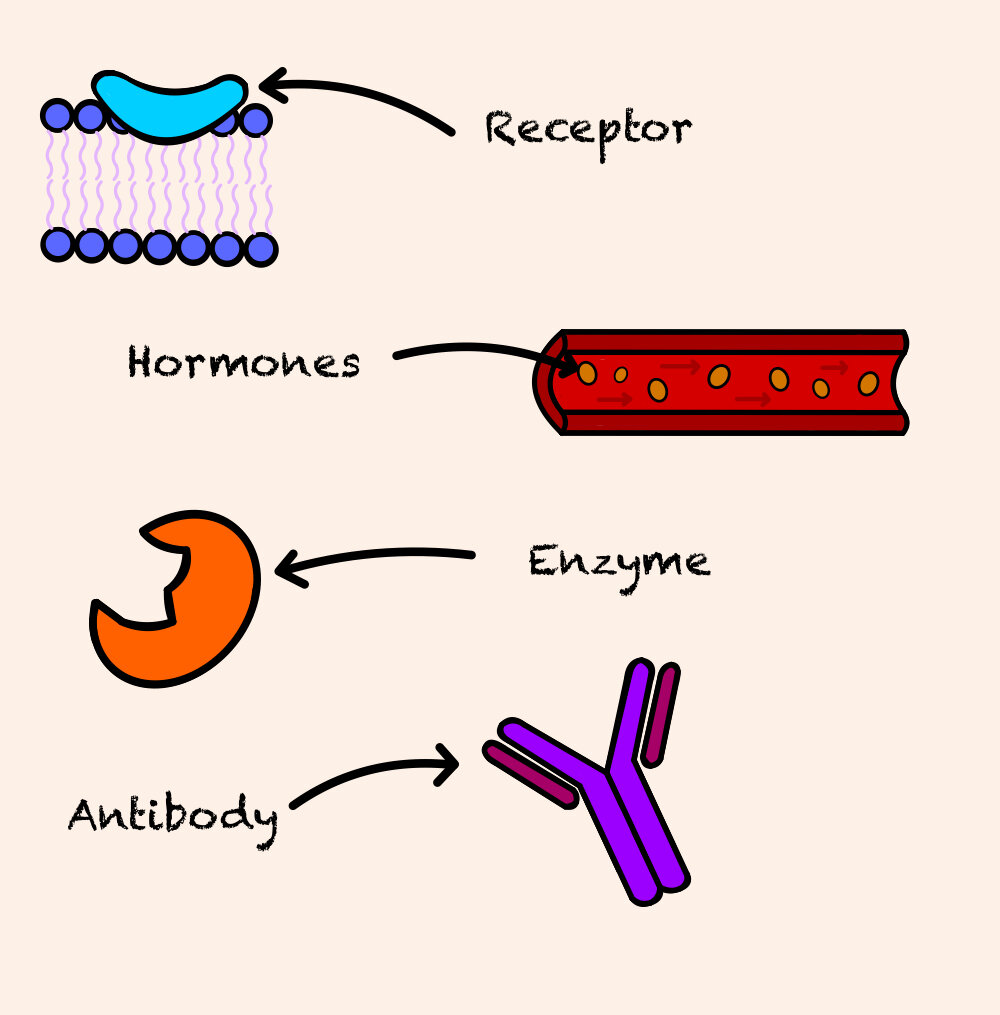Gene Expression
RNA
There are 3 main forms of RNA that we discuss in Higher Biology: mRNA, tRNA and rRNA. These are their roles:
mRNA: Messenger RNA (mRNA) carries the genetic code for a protein from the nucleus to the ribosome for translation.
tRNA: Transfer RNA (tRNA) carries an amino acid to the ribosome and displays an anticodon, complementary to a specific mRNA codon, which ensures each amino acid is in the correct sequence.
rRNA: Ribosomal RNA (rRNA) is a primary component in ribosomes and therefore helps the organelle carry out protein synthesis.
RNA is different from DNA in a few ways.
-RNA is single stranded whereas DNA is double- stranded.
-RNA bases include cytosine, guanine, adenine and uracil, whereas DNA has cytosine, guanine, adenine and thymine.
-RNA contains a ribose sugar, whereas DNA contains a deoxyribose sugar.
Transcription
Transcription takes place in the nucleus.
RNA polymerase is an enzyme that unwinds and unzips DNA for transcription and copies the DNA sequence by adding RNA nucleotides onto the mRNA transcript.
Process:
1. RNA polymerase unwinds the DNA structure and hydrogen bonds break between base pairs to unzip the DNA structure.
2. The primary transcript is synthesised as RNA polymerase adds RNA nucleotides to the forming mRNA molecule.
3. The primary transcript of mRNA undergoes RNA splicing to form the mature mRNA transcript.
4. The mature mRNA transcript then leaves the
nucleus to travel to a ribosome for translation.
RNA splicing
RNA splicing is the process by which non-coding regions of mRNA are removed from the primary mRNA transcript to form the mature mRNA transcript.
This takes place in the NUCLEUS
An exon is a coding region of the primary mRNA transcript.
An intron is a non-coding region of the primary mRNA transcript.
Codons
A codon is a RNA sequence of 3 nucleotides that encodes for a specific amino acid.
A start codon is a sequence of 3 nucleotides that is the first codon in an mRNA transcript that is translated by a ribosome and commences translation.
A stop codon is a sequence of 3 nucleotides that is the last codon in a transcript and terminates translation of an mRNA transcript.
An anticodon is a sequence of 3 nucleotides on a tRNA molecule that is complementary to a specific codon.
Translation
Process:
1. Mature mRNA transcript travels in the cytoplasm and attaches to a ribosome.
2. tRNA molecules transport amino acids to the ribosome. 3. A start codon initiates translation.
4. Complementary codons match with anticodons on tRNA. 5. Peptide bonds form between amino acids as more tRNA molecules enter the ribosome. Once the amino acid is joined, the tRNA leaves the ribosome to collect another amino acid.
6. A stop codon terminates translation and a polypeptide has been formed.
Key Points!
-
Protein Structure
Proteins are made up of amino acids.
Types of proteins include receptors, hormones, antibodies, enzymes and structural proteins
-
Enzymes
Enzymes are biological catalysts.
They speed up rate of reaction without being used up in the reaction.
They have a complementary substrate(s) to their active site.
They can break down and synthesise products.
-
Temperature and pH
Enzymes and other proteins have an optimum pH and temperature.
If temperature is too low, reaction rate is slow because molecules are not moving fast enough.
If temperature is too high, proteins can denature.
If an enzyme is exposed to too high or too low a pH, then the enzyme could denature.



